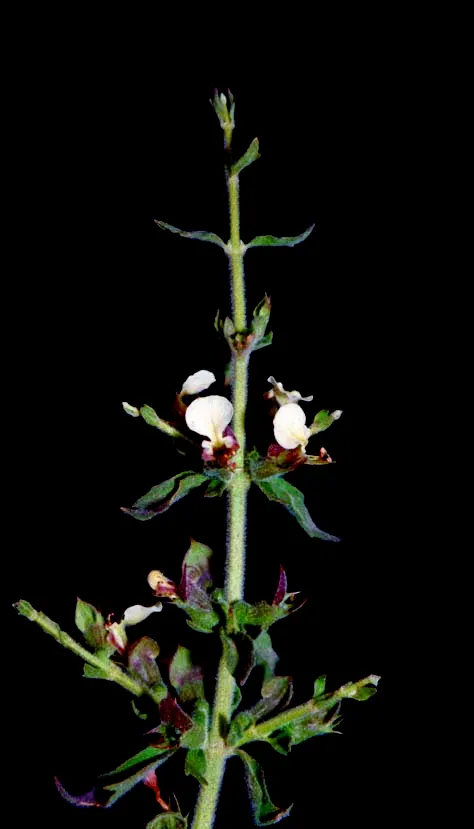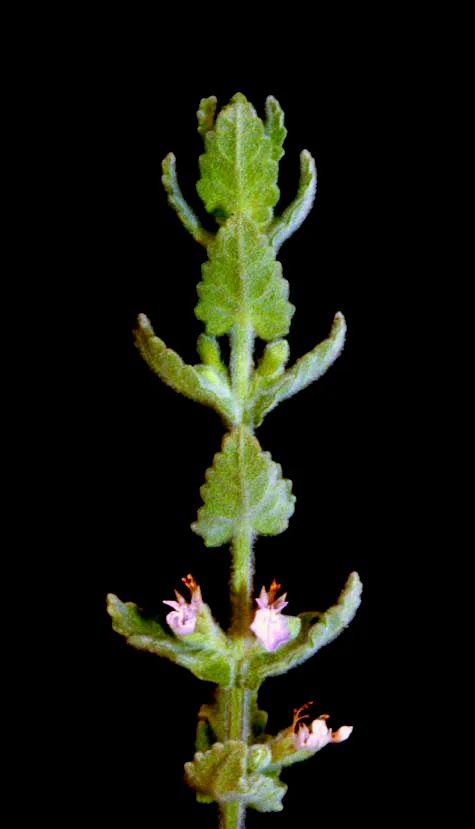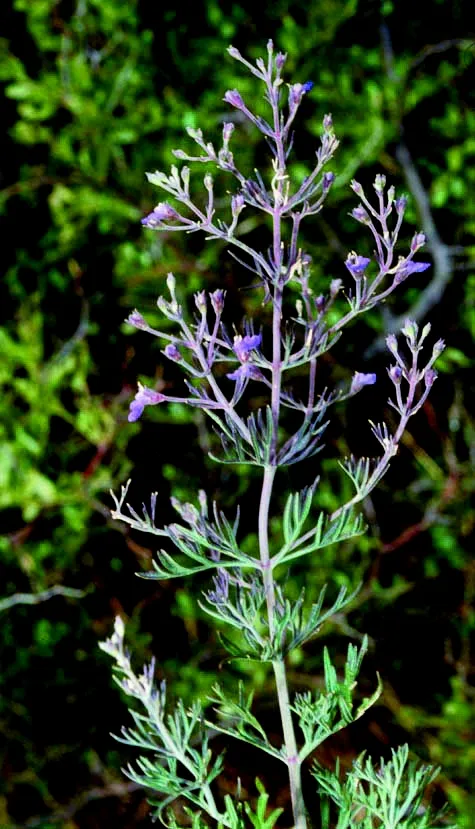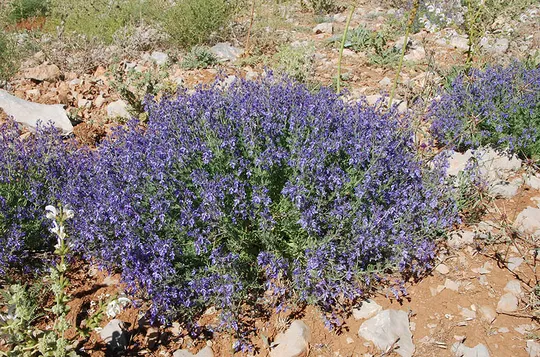Tall Germander
Teucrium procerum
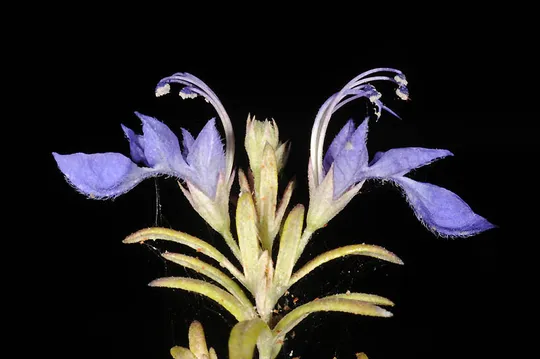

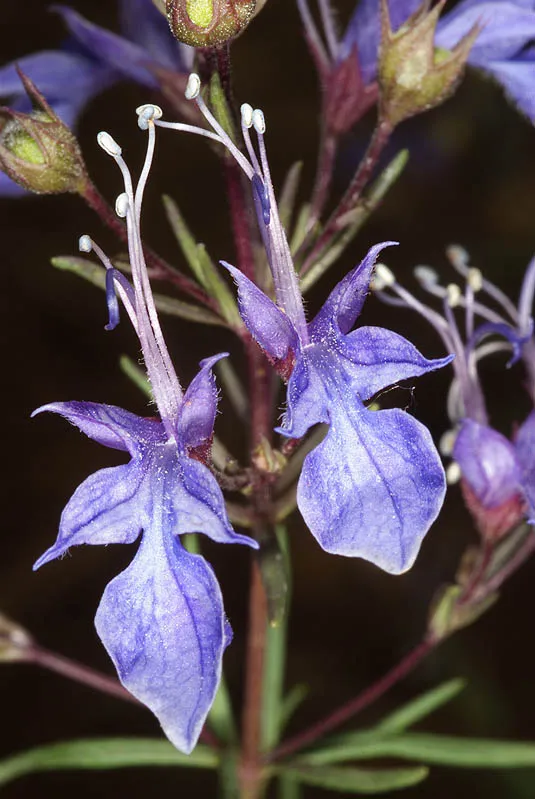
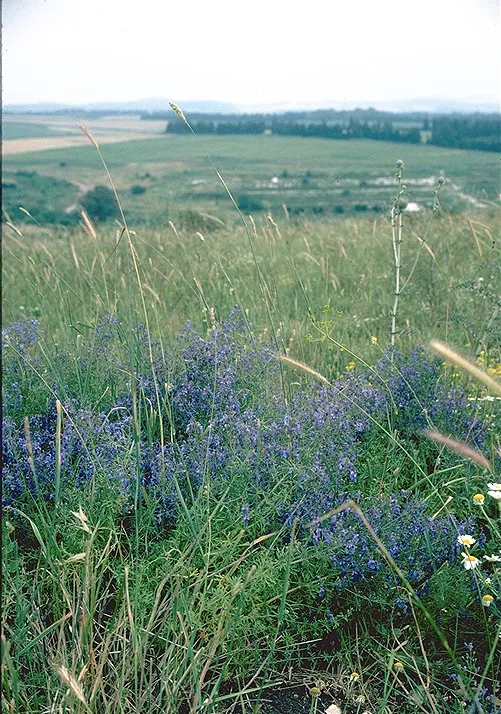
Teucrium
procerum grows in
only two regions, the Sharon and Ramat Menashe. The
Sharon populations grow on 3 sites in the Bney
Tsion-Harutsim area and also in Tel Zror east of Hadera. In Ramat Menashe three populations survived, close
to Wadi Shelef near Kibbutz Ramot Menashe. T. procerum once grew in the Sharon in
Karkur, Pardes Hanna, Hadera, Ilanot (observation from 1981), Magdi'el and Ramatayim, but these populations are extinct. The populations Eig recorded in
Petah Tikva (Philistian Plain area) in 1924 are extinct as well. The information in the
Flora Palaestina on T. procerum
from the Golan probably regards T. orientale, and suggests
the two species are closely related.
Alluvial Hamra, clay Hamra soils,
sandstone and
tightly packed soils, heavy soils. Occasionally found near flow channels and ravines.
For the genus, see Teucrium
parviflorum.
T. procerum
belongs to a group of Teucrium whose
leaves are lobed (T. orientale, T. pruinosum and T. parviflorum) and it
differs from them by its glabrous leaves and other parts (for
the most part). T. procerum is particularly close taxonomically to T. orientale, which grows
on the Hermon and the Golan Heights, as well as to T. pruinosum and T. parviflorum. The exact distinction between the species is
difficult, and there is also confusion regarding the nomenclature between different sources.
T.
orientale grows on the edges of dolines on the
Hermon heights and on
Mount Avital in the Golan Heights. T. parviflorum is a rare species of
heavy soils in the transition zone in the Galilee and the
Ma'on Ridge, and is characterized by its small flower, 7-8 mm in length. T. pruinosum is
the closest specie to T. orientale, whose calyx lobes are
bent backwards, and it grows on volcanic ash in the Golan.
·
The main danger facing Teucrium procerum is the disappearance and destruction of habitats
that are not located within nature reserves, due to development activities.
·
The T. procerum
populations are restricted to patches in
special habitats, where individuals grow in close proximity. The patches
are isolated and hundreds of meters to dozens of
kilometers apart.
·
The largest T. procerum population grows at Tel Zror and includes circa 1000 plants. The
other populations contain only a few dozen individuals. There is
not sufficient information about the dynamics of change in the existing populations, but observations from several years suggest that the population size is stable. Despite the high number of seeds produced, germination and
establishment rates are very low and it is
unclear whether they are sufficient to preserve the size of existing populations and establish new populations.
·
T. procerum is protected today only in the Bney
Tsion Reserve in the Sharon.
Additional
populations of Teucrium procerum (Tel Zror, North Harutsim) should
be included in the nature reserve. The dynamics of the existing populations – mortality rates, germination and individual turnover – should be monitored. Attempts should be
made to transfer plants to nature reserves, on a growth substrate similar to that of the source populations.
Teucrium
procerum grows in
the Middle East: Syria-Lebanon, southern and eastern Turkey, northern Iraq and western
Iran.
Teucrium
procerum is seriously threatened and only remains in a small number of sites in the Sharon and Ramat Menashe areas. It is protected in only one nature reserve – the Bney Tsion Reserve.
Another factor emphasizing the importance of preserving T. procerum is its spectacular blooming colors. Its spatial dispersion
pattern is in fragmented patches, on
which dense populations of a few dozen to 1000 plants grow. Destroying the habitat in a specific,
unprotected site may lead to the extinction of an entire population. The
areas in which the species is protected should be expanded and all existing populations should be
monitored.
פולק, ג. 1984. מבחר מיני צמחים אופייניים לחמרה וכורכר. געדה קיפחת. רתם 13: 137-138.
פולק, ג. 1988. תצפיות בוטניות– געדה קיפחת בתל זרור ליד חדרה. רתם 28: 79-81.
Current Occupancy Map
| 1000 squre meter pixel | 5000 squre meter pixel | 10000 squre meter pixel | |
|---|---|---|---|
| number of observations | 0 | 0 | 0 |
| in total pixels | 0 | 0 | 0 |
| Family | Lamiaceae |
| Classification | On the endangered species list |
| Ecosystem | Coastal area |
| Chorotype | Eastern Mediterranean |
| Conservation Site | Harutzim Nature Reserve, Tel Zror |
| Rarity |
1
3
6
|
|---|---|
| Vulnerability |
0
4
4
|
| Attractiveness |
0
2
4
|
| Endemism |
0
2
4
|
| Red number |
1
6.3
10
|
| Peripherality | N |
| IUCN category | DD EW EX LC CR EN VU NT |
| Threat Definition according to the red book | Critically endangered |
 Based on:
Based on:
